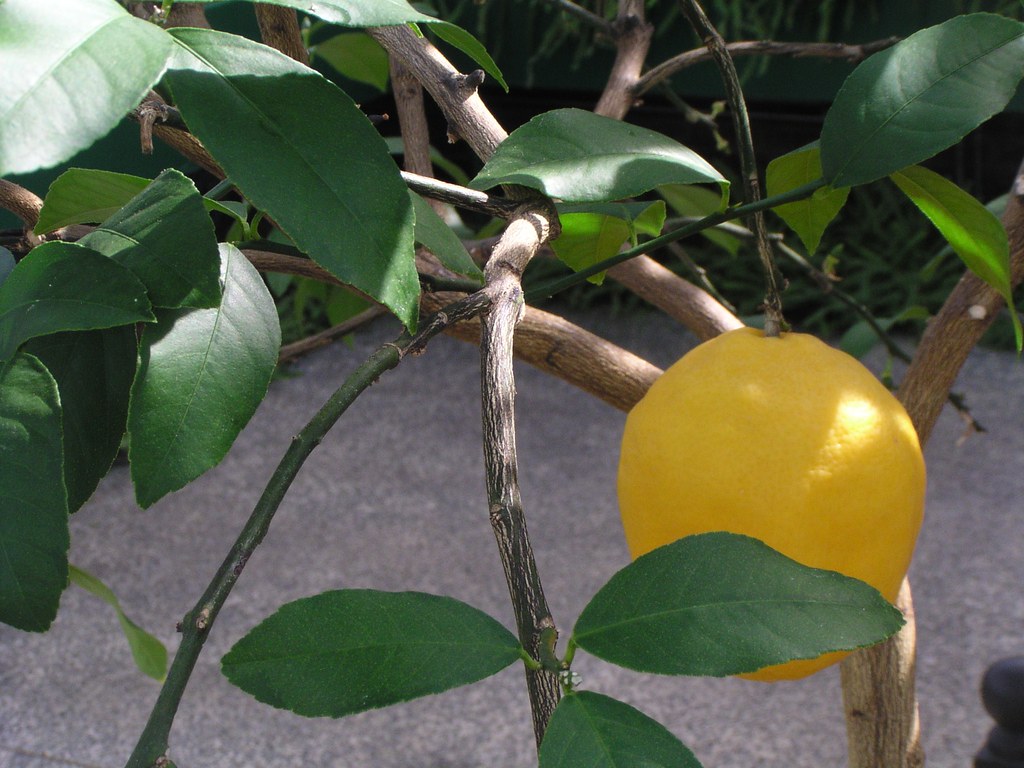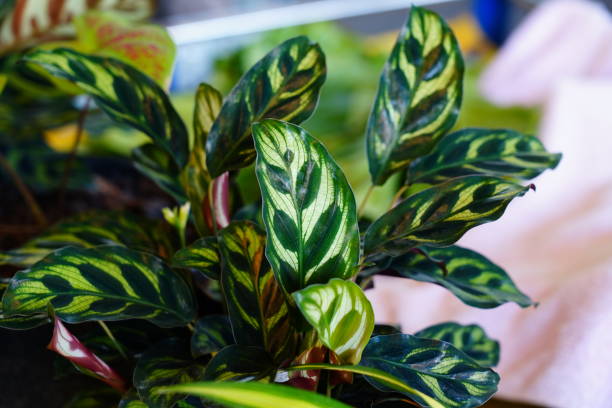Grapefruit Tree: How To Grow Grapefruit And Care

Did you love the tangy citrus candies in grapefruit flavor as a child? Or do you love the tangy-sweet grapefruits as an adult? If yes, then why not grow a grapefruit tree at home for yourself?
Yes, you can grow a grapefruit tree at home as it is easy to grow and doesn’t require much effort. All you need to know for it is some proper steps and growing tips, and you can have your own grapefruits at home without any additives or pesticides. Other than being tasty, there are also many grapefruit benefits for health which can also be a reason for growing it if you are a health-conscious person.
In the article, we will tell you about the steps for growing grapefruit, along with care tips for it. We will also discuss the common pests for which you need to be on the lookout to keep your priced plant healthy.
How To Grow a Grapefruit Tree?
- Botanical Name: Citrus Paradisi
- USDA Zones: 9 or above 9.
- Type of Soil: Well-Drained Soil
- When Is Grapefruit Season: Springs or Fall. But the Spring Season Is Best.
- Sunlight: Full Sunlight
Growing From Seeds
You can grow grapefruit from the seeds, but it is not recommended as there are high chances of failure. The grapefruit growing through seed is also not good as compared to the method of growing through saplings.
Growing through seed also takes longer in comparison to the saplings method.
Growing From Saplings
For planting the grapefruit using a sapling of the tree, you need to follow these steps:
- Dig a hole that is twice the size of the root ball of the grapefruit tree.
- Keep the depth similar to the size of the root ball.
- Now remove the grapefruit from its container and look if the nursery has used a growing medium or soil for its growth.
- If it is a medium and not soil, then gently wash off the medium before planting it.
- Now plant the sapling in the hole you dug in a way that is slightly higher than the container it was in before.
- After this now fill the hole with soil and tamp gently around the sapling, merging its roots properly like they were in the container.
- Now water your grapefruit tree just after planting. But remember that you don’t uproot it with water pressure.
What To Do If Planting Multiple Grapefruit Trees?
You need to follow the same procedure for the plantation of multiple grapefruit trees, as we told above. One thing to remember is that you should keep a gap off at least 15 to 20 feet between them.
Mulching
The mulching of the grapefruit tree is not recommended as it may lead to rotting of the roots and trunk. Grapefruits are prone to rotting. However, if you feel compelled to go for mulching, then you should keep at least a gap of 1 foot from the trunk of your grapefruit.
How To Use Herbicides?
The grapefruit tree is a sensitive plant, and thus, it is best to remove the weeds and grass by hand. However, if you go for application of the herbicides, then follow these steps:
- First, wrap your tree’s trunk using aluminum foil. This will protect it from chemicals.
- Now use a herbicide spray and apply it gently directly on the weeds and soil.
- When applying, you should be careful not to spray the leaves or the other parts of the grapefruit tree.
You must know that removing the weeds and grass is essential as, like other plants, grapefruit trees also don’t like to compete with grass and weeds for growth.
When Is The Grapefruit Season?
Like any other plant, there is a specific season for growing the grapefruit tree for the best results.
You can grow your tree in the fall or spring; however, the spring season is more preferable and gives the best results. Plantation in the spring gives the plant more time to grow and establish before the onset of winter. These tips are specifically for the colder regions where winter can be a problem.
However, if you live in warmer areas and winters are not harsh, you can plant it in any season. It can thrive in almost all seasons until it’s not too harsh for it.
Soil
- The grapefruit tree likes well-draining soil, and thus, you must be careful that it doesn’t stand in water.
- If you have soil that drains poorly, then you can amend it using sand.
- Wet and poorly draining soil for the grapefruit means short life and low production of fruits.
- For best results, you can go for mound plantations, where you plant them on a raised platform. This will help you in providing them with better drainage.
Water
- The grapefruits need watering every 3rd to 4th day until they establish properly.
- Once they have established themselves, cut your watering schedule short and water them once a week.
- One thing to remember before watering is that makes sure that the soil around it is dry. This is essential as it doesn’t like wet soil conditions.
Sunlight
The grapefruit tree requires full sunlight for at least 8 to 10 hours a day for best results. Thus make sure you plant in an area where it gets enough sunlight but remember, too much heat can cause burns.
This is common for all the varieties, including the ruby red grapefruit variety.
Grapefruit Diet
The grapefruit-like any other plant, requires nutrients for proper growth. For this, you can follow these steps:
- During the first 2 or 3 years of its growth, you need to fertilize it for the best results.
- Use a 6-6-6 type of fertilizer.
- After the tree starts to bear fruits, switch your fertilizer to citrus fertilizer.
- Provide it with fertilizers three times a year. First during the spring as it is the growing season, then in when it starts to bear fruits, third when fruits start to mature.
If you provide the grapefruit diet or fertilizers properly to it, then the fruits can bear more than 25 pounds of harvest in the first harvest.
Pruning
The grapefruit tree is a low maintenance tree and thus doesn’t really need pruning. However, if you see the winter damage, you can do the pruning once the winter season is gone. You need to cut away the damaged and dead leaves and wood from the tree.
Avoid excessive pruning as it will stress the tree. This is common for most of the varieties of this plant, whether it is ruby red grapefruit or any other variant.
How To Protect a Grapefruit Tree In The Winter Season?
The protection of the grapefruit is an essential thing for the best results. Follow these steps for it:
- When the grapefruit is young, you can go for soil banking. Near Thanksgiving, it time to treat the trunk of the tree with a copper fungicide and insecticide. Now around the trunk, build a mound of soil that goes up to the height of leaves.
- After the winters till the beginning of March, keep the sound and wash it off carefully. This method works well until your tree is 3 t 4 years old, but after that, it is not practical.
- Another method which you can try for your big plants is to cover them using a tarp or plant cover.
- For an added heat, you can wrap the tree in incandescent Christmas lights.
- In case you are growing the dwarf variety of grapefruit in containers, then simply bring it indoors.
These are some steps that you can follow to protect your grapefruit tree from the harsh winters.
Pests And Problems of Grapefruit Tree
The grapefruit is relatively a pest-free plant, but still, it can face some problems. These are:
- If you see holes in the tree, then it may be due to rodents. Thus find and remove any rodent nests around or near the tree.
- Aphids and Asian Citrus Psyllid. These are two common insects that may harm your plant. For this, you can remove the aphids by simply jetting the plant with water. For psyllid, you need to jet it using a homemade soap insecticide.
- When spraying it with soap, you need to be through as it only affects insects that come in direct contact with it.
- Caterpillars may also be a problem in some cases, but they visit in small numbers. So simply pick them off.
These are some pests that may be a problem to the grapefruit tree, so look out for them. Controlling them is essential for the best fruits and healthy growth of the plant.
If you follow these growing and caring steps as we have mentioned above, you can enjoy this amazing fruit. The good thing is there are various grapefruit benefits for health as well as the environment for which you can have it in your garden. What’s even more interesting is that if you don’t have open space, then you can try the dwarf varieties of this plant which you can even grow indoors.
Bottom Line
A grapefruit tree is an amazing option if you want to have a fruit plant in your home. Good thing about this plant is that growing and caring for it is easy and doesn’t require much effort.
There are also various varieties of this tree-like ruby red grapefruit, which you can try. It also has some dwarf varieties, which you can try when you want indoor plants. The dwarf varieties are not only ornamental but also produce fruits, and thus it can be a double bonus for your home.





